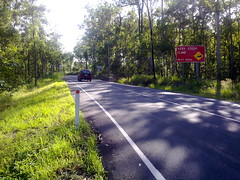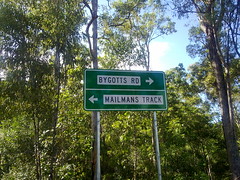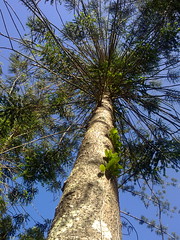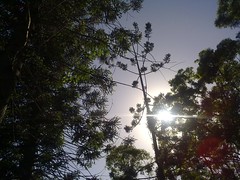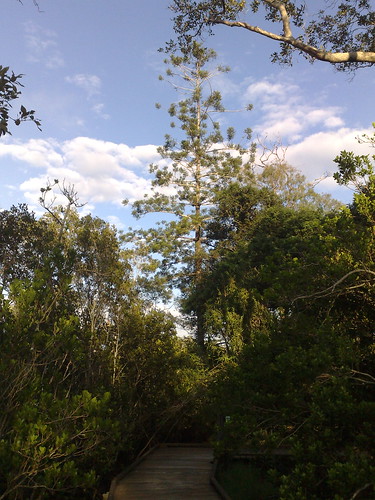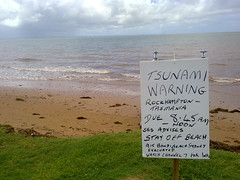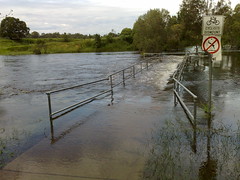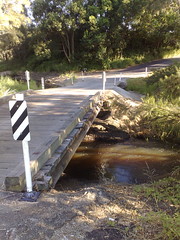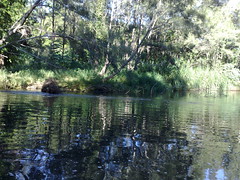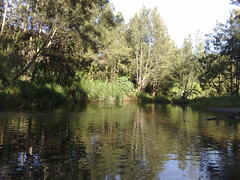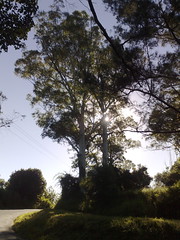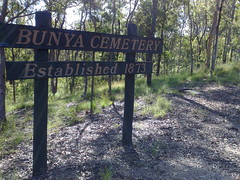I rode out to Samford this morning via Winn Road, and came back via the Mailman’s Track and Bunya Road.
The Mailman’s Track is wonderfully hilly (just the thing for a Saturday morning bike ride), and leads into some beautiful state forest along Bunya Road.
Although the area is called “Bunya” I had a hard time finding any Bunya Pines (Araucaria Bidwilli). So I was delighted to find a couple of majestic specimens by the side of the road.
The aborigines used to harvest the nuts from these trees for food. They drop their huge 5-10kg cones in abundance every three years, so you have to be careful standing under them in late summer!

